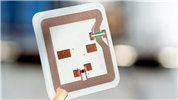RTLS super users offer advice and best practices

For its first investigation of provider RTLS use in more than three years, KLAS has polled deep adopters of the technology to learn about how it’s best deployed and what it can help achieve.
WHY IT MATTERS
Real-time location systems have big promise for hospitals across multiple diverse use cases, and can lead to major cost savings when optimally deployed. But embrace of RTLS, despite longtime interest across the industry, has been relatively modest, given its complexity and the investments necessary for installing it enterprise-wide, which is how it’s most effective.
As a follow-up to it 2016 report, which saw a sizeable appetite from health systems looking to gain efficiencies from RTLS, KLAS checked in this time with some of the most advanced users of the technology to see what outcomes it’s helped them achieve and how other provider organizations might do something similar.
The report found that effectively deployed RTLS has helped those hospitals increase data visibility (85 percent), improve patient safer (65 percent), boost efficiency (59 percent) and realize financial gains (41 percent).
KLAS asked these organizations about the vendors they use, and found a wide array of responses.
“Among the high performers, CenTrak and Stanley Healthcare stand out for the greatest breadth of validated use cases; they support their broad offerings with strong guidance that drives tangible outcomes for their customers,” said researchers.
One CenTrak customer has gained “significant savings by setting up return areas for rental equipment,” while “another uses integration with the nurse call system to improve nurse response times and, as a result, the patient experience” And one hospital’s Stanley deployment “leverages auto-alerts for temperature monitoring, resulting in improved efficiency and millions in savings by preventing medication loss.”
TeleTracking, Midmark RTLS and Sonitor are particularly good at enabling collaboration and getting actionable data, meanwhile, said KLAS.
“TeleTracking deep adopters report the vendor is a partner in their development, feels like part of the organization, is willing to come on-site, and collaborates to solve problems,” said researchers. “Midmark RTLS deep adopters receive clear data from their solution that is then supplemented by calls with the vendor that can be tactical (helping customers utilize their data to drive outcomes) or strategic (helping expand RTLS use cases). Sonitor is praised by deep adopters for providing accurate, real-time data that helps facilitate discussions with physicians, and one deep adopter described their work with the vendor as a team effort.”
Cerner and AiRISTA Flow, however, “report the fewest RTLS use cases and have the lowest satisfaction,” of those customers polled, according to KLAS. “No deep adopters of either vendor mention receiving collaboration or guidance to drive outcomes,” said researchers. “Many report data-accuracy issues, poor integration, and inadequate support.” In fact, “some say they have to pay extra to get the help they need.”
THE LARGER TREND
KLAS also asked respondents to share some advice and best practices for RTLS deployments. Among them, these provider organizations said it was important to:
- Formalize departmental ownership and collaboration, ensuring buy-in and role definition among technical and IT pros, clinical experts and nurses. “While getting financial buy-in for dedicated RTLS resources is a big challenge, having people assigned to ongoing tasks like battery management, RTLS infrastructure support, and solution updates is key to success,” said researchers.
- Plan use cases early, and have a clear understanding of how they’ll improve outcomes. “This includes planning how to integrate the RTLS solution with existing workflows and other software solutions to achieve improved efficiency, cost savings and other outcomes,” according to KLAS. “This provides a solid foundation for further optimization and expansion of RTLS use.”
- Set up use and maintenance processes for RTLS, such as the aforementioned battery replacement, as well as badge and tag ordering and general equipment upkeep. Thi may seem obvious, but respondents also said that health orgs “should also determine standards for what items should be tagged.”
- Make smart use of vendors’ expertise. RTLS companies have the insights that can help organizations chart strategy or set up effective integration with other systems, said researchers. “Two-way collaboration with a trusted vendor partner can lead to ongoing outcomes and continued innovation.”
- Channel RTLS data into continuous process improvement and workflow efficiencies. “More impactful outcomes require analyzing data, making changes, and continuing to follow up on progress,” according to the KLAS report.
ON THE RECORD
“Don’t look at an RTLS solution as just a tracking system,” said one biomedical engineer polled by KLAS for the new report. “Providers should ask themselves how they can use the RTLS tool to get the best outcomes for a task or patient. There is more than one way to use the tool. A lot of people get stuck doing something one way, and they don’t step back to see what else they can do. They don’t look around to see what types of services are available.”
“Organizations need to really look at which departments are involved,” one CIO advised. “It is important to get the right teams involved at the onset so that people can have ownership up front. Before introducing an RTLS solution, it is important to have operational ownership and policies about it. We struggled with trying to manage the RTLS solution because nobody really wanted to own it. Organizations need to make sure everyone buys in up front.”
Twitter: @MikeMiliardHITN
Email the writer: [email protected]
Healthcare IT News is a HIMSS Media publication.
Source: Read Full Article